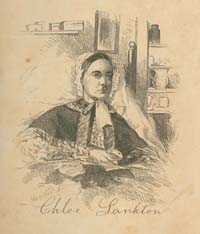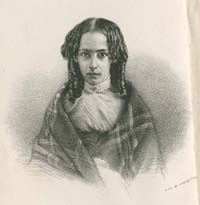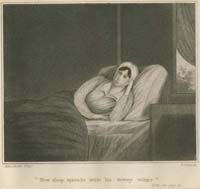The Chronic Invalids: Celebrities in Sickness
Invalidism was widespread among women in the 19th century. While causes of the illnesses afflicting women were vague and often contested by physicians of the time, contemporary scholars of medicine and women’s history alike attribute the epic proportions of bedridden women in part to the prevailing cultural acceptance of an unhealthy female body. The discourse surrounding women’s health that emerged at the time was influenced by a rapidly changing society. As urbanization called men to work outside the home, upper-middle-class women were relegated to it. No longer having to perform the great physical labor required of previous generations of women, the 19th-century female body was instead encouraged to be delicate and fragile.
Cynthia Taggart, Cornelia Lathrop, and Chloe Lankton were each regarded as physically unwell by those who knew them. Taggart and Lankton, both chronic invalids, were known for their piety in the face of physical suffering. Though Lathrop was only bedridden for a short period at the end of her life, the piety she displayed served as inspiration for her biography. None of the portraits was published in an autobiographical narrative; this begs the question: how did these three women perceive their own physical well-being and what say did they have in their consequent fame? Only Taggart gives us a clue, in poems such as “The Use of Afflictions” and “Lines Composed in Great Suffering.”


